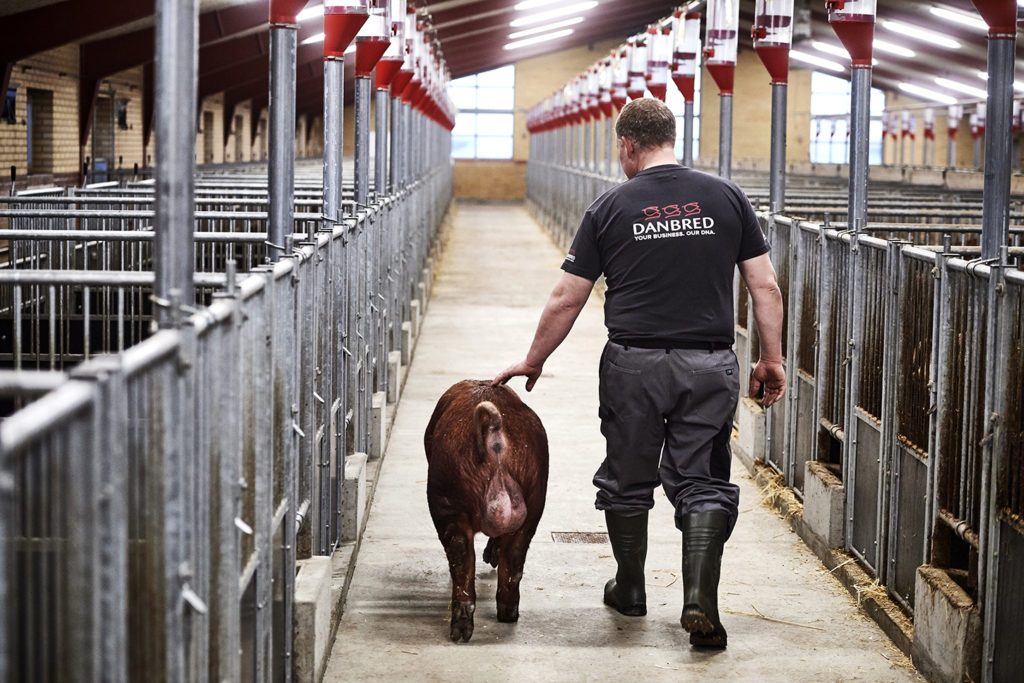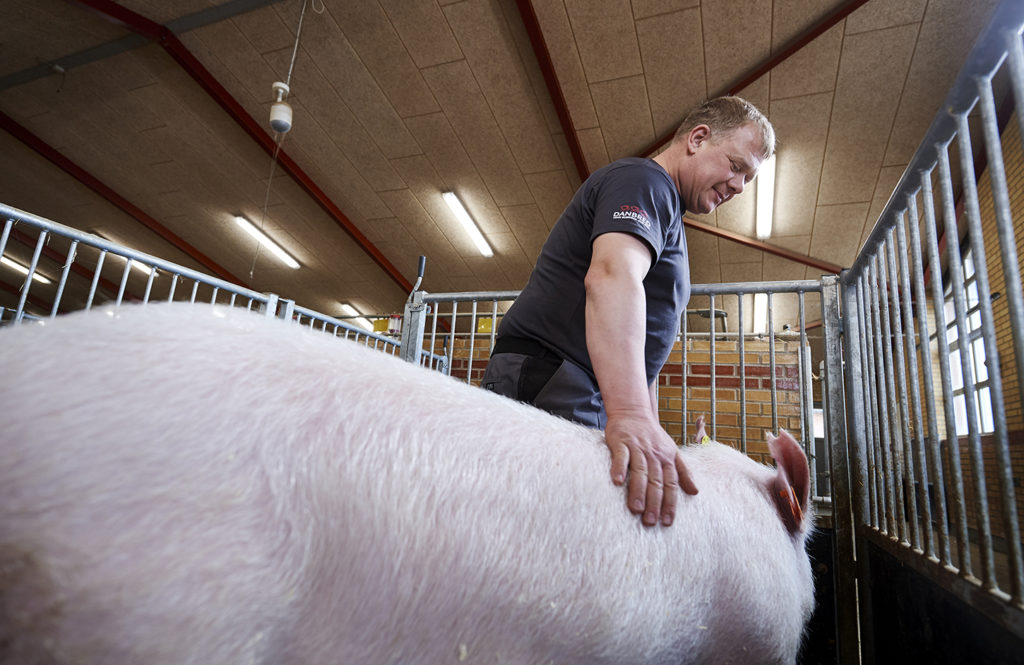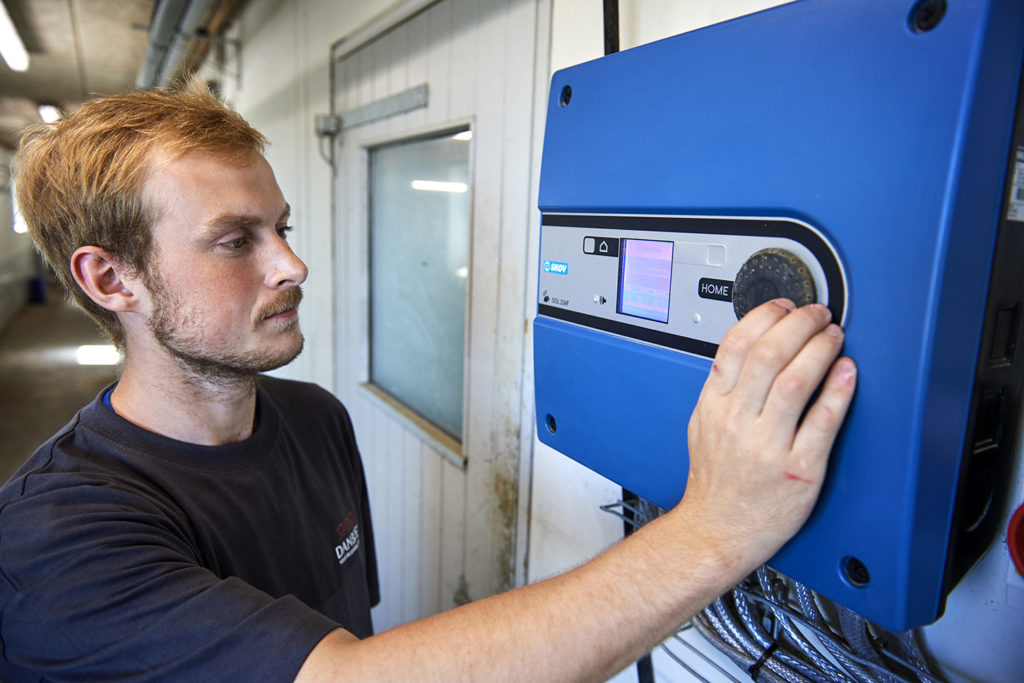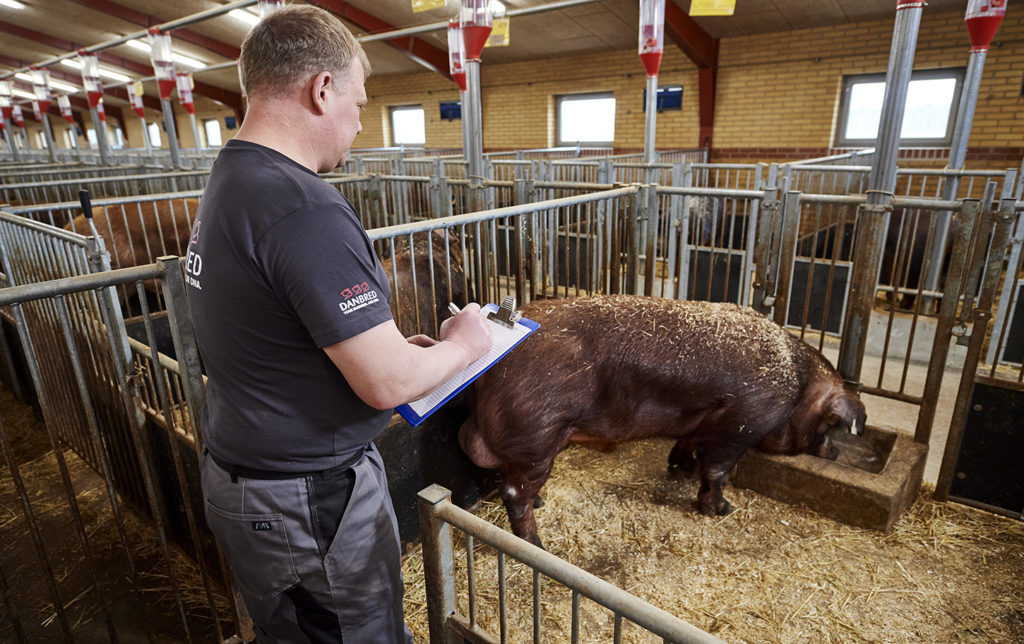Transport – Effect on boar performance
Content
Why do age and transport affect boar performance?
The correct transport and handling of on-farm boars is of the utmost importance to release their full genetic potential, whilst also preserving the high-quality of the boars- especially their semen.
Maximise productivity with correct handling
High health DanBred genetics are well known for world-class performance- delivering large robust litters with an extraordinary genetic potential for growth. Correct transport and handling of on-farm boars is of the utmost importance to release the full genetic potential and to preserve the high-quality of the boars- especially their semen, Careful attention to detail and knowledge on how/ when to transport the boars is vital to achieve the full value of extraordinary potential for reproductive performance that DanBred breeding animals deliver.
Ensure correct transfer of new boars
The correct handling of boars is imperative for their ability to produce quality semen- in particular, changes in the surrounding environment are of great concern when it comes to maintaining and enhancing the quality of on-farm boars. The approach to transport is important as transport can lead to the risk of injuries and stress, both of which negatively affects semen production. This is why the transport of sexually mature boars is never recommended. In cases where it is absolutely necessary to move the boars, the following considerations should be taken into account.


Age of the boar is one of the first factors to consider when considering transport. Sexually mature boars should always be transported separately, so as to reduce the risk of aggressive behaviour and fighting during transportation. Younger boars can be transported together, but only with well known pen mates. Mixing of boars prior to transport will lead to fighting, which with a considerable risk of devastating injuries (Lambooij, 2014).
Size and fitness is also a key factor when determining if transportation is an option, as the the heavier or larger the boar is, the greater the risk of injuries- in particular leg injuries. Transport can be a rough affair and it has been shown that pigs, especially in shorter distances, will stand whilst being transported due to their alertness towards the new surroundings- this in turn increases the risk of leg injuries essentially because their base is moving (Faucitano et al., 2019). Fever is another factor which has a negative effect on semen production- boars which experience body temperatures above 39°C for 2 days or more can have an increase in abnormal sperms- this can take up to 8 weeks before semen quality is back to normal (Vestager, 1993).
Temperature and humidity both have profound effects on pig welfare, as pigs are unable lose heat by sweat. Therefore it is essential to have good climate control when transporting boars. In particular, the exposure to high ambient temperature has shown to have a long term negative effect on semen production. Ambient temperatures above 30°C can affect semen production for as long as 8 weeks (DPRC, 2013).
Basic recommendations for the transport of boars


- Wherever possible, prevent transporting sexually mature boars (> 6 months).
- Ensure the transportation of boars in separate compartments within the vehicle.
- Younger boars (< 6 months) can be transported in smaller, static, socially known groups.
- No new entries to the group within 14 days of the transport.
- Do a thorough health and fitness evaluation of each boar before transportation and again upon loading.
- Ambient temperature should not exceed 30°C for long periods of the journey.
- Transportation at night is recommended in hot climates.
- Floors in the transport vehicle should be skid proof and prevent the boars from slipping.
- Sufficient bedding materials should be supplied in the transport vehicle.
References
Danish Pig Research Centre (DPRC) (2013): Ornens Reproduktion. SEGES Videncenter for Svineproduktion. Retrieved 29/05/19 https://svineproduktion.dk/Viden/Om-grisen/Avl-og-reproduktion/Reproduktion/Ornens-reproduktion.
Faucitano, L., Rioja-Lang, F.C., Brown, J.A. and Brockhoff, E.J. (2019): A Review of Swine Transportation Research on Priority Welfare Issues: A Canadian Perspective; Front Vet Sci. 2019; 6: 36.
Lambooij, E. (2014). Transport of Pigs. In T. Grandin (Ed.), Livestock Handling and Transport 4th Edition, CAB International, p. 280-297.
Vestager, L. (1993): Sammenhæng mellem orners sygdom of sædkvalitet, Erfaring nr. 9318, Landsudvalget for Svin, Videncenter for Svineproduktion.




